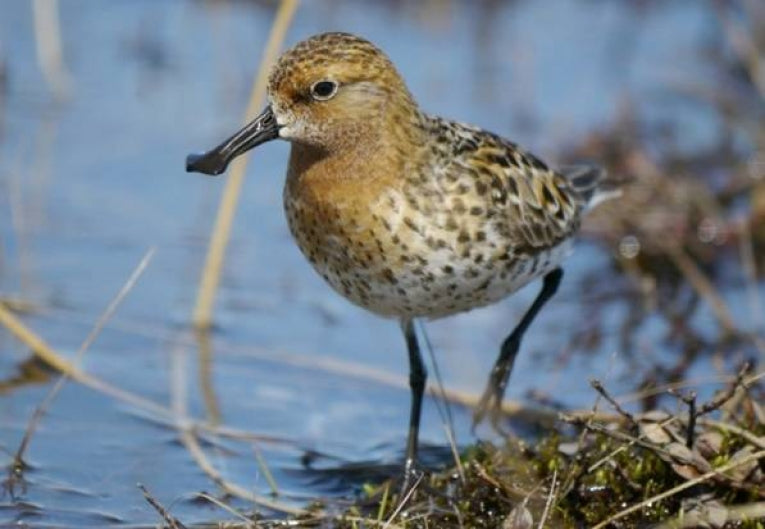Many sponsors such as Walt Disney are supporting this appealing international attempt to bring back one of the many birds that are becoming extinct. The birds are being kept in a warm environment as they should be wintering in the heat of south-east Asia just now, having migrated as young birds from their normal breeding ground in the north-east. (in Chukotka, Siberia and on the Chinese coast). The reality is that we have lost 21 species in the last 30 years. The most recent was the Guadalupe Junco, Junco insularis. A further 189 bird species are critically endangered.
The concentration on birds here tends to leave a gap in our minds regarding fish, insects or even whales. The habitats that have brought the sandpiper to its tiny knees are coastal mud-flats which are all in areas that have become heavily industrialised. Whether pollution or simply habitat loss is responsible for almost the last spoon-billed sandpiper has yet to be investigated. The sooner we find ways of preserving in order to conserve, the better! The EAAFP (Partnership for the East Asian-Australasian Flyway) met in Cambodia and endorsed the Task force to protect the bird. This group are comprised of 14 countries and 12 other non-governmental members, attempting to clean up the mess in the western pacific "flyway."
Their aims are to counter the following threats:
Loss of habitat through reclamation of wetlands, loss of habitat due to intensifying agriculture, degradation of habitat through pollution, reduction or diversion of water supply, increase in disturbance by humans, invasive plants and predators and climate change.
Meanwhile the lucky thirteen sandpipers seem likely to survive the warming British winter and then prepare along with thousands of other birds at Slimbridge for the breeding season. The question as to whether captive breeding ever ensures survival could be answered in this very species. Researchers - aim to return some eggs and nestlings to promising nests back in their eastern natural habitats. The obvious solution perhaps, but we need to check on percentage survival very closely. Nigel Jarret, Head of Conservation Breeding at WWT, puts it succinctly, "In some ways we're going into the unknown now but every day that passes is a success. The priority is to keep the birds alive and healthy so that eventually they can breed." To bring the birds to Britain, Nigel Jarrett and WWT colleague Martin McGill spent weeks with biologists from Birds Russia searching for nests on the remote tundra in Chukotka, Far East Russia.Here is a brief video of the expedition:
To watch the progress of the 13 birds, you can twitch to your heart's content watching footage from the CCTV cameras being broadcast to public screens at WWT.

A Spoon-billed Sandpiper on the Chinese coastal tundra vegetation it loves; Credit: Birdlife International
UK coverage on BBC and ITV is already extensive, while we put in our sandpiper two penn'orth last month.
As far as I can work out, if their breeding season in Siberia is from June to August, we may see some basic activity around June, but with young birds, it could well be another year before they start breeding properly.
You can help out spoon-billed sandpipers on this website: Birdlife International; This is of course a charitable institution.










